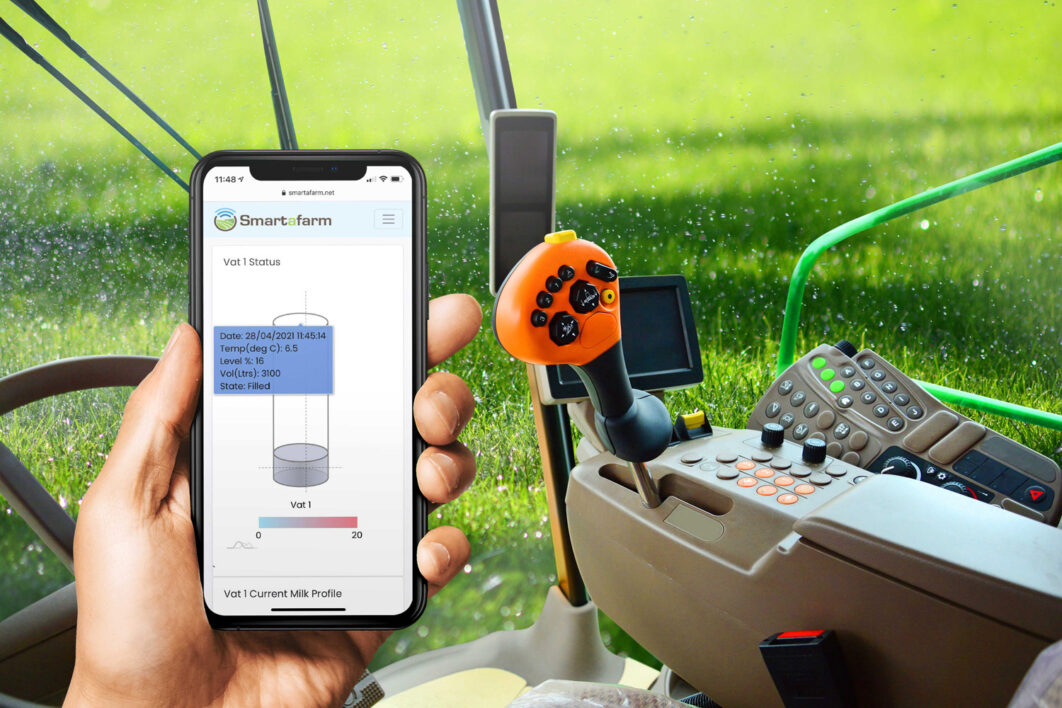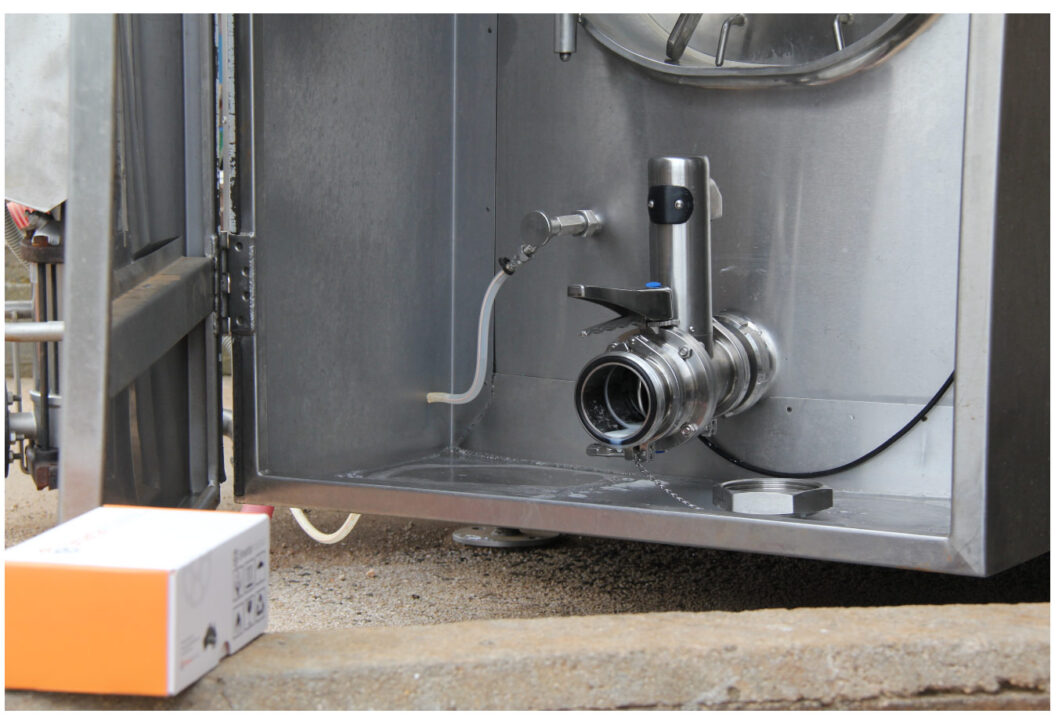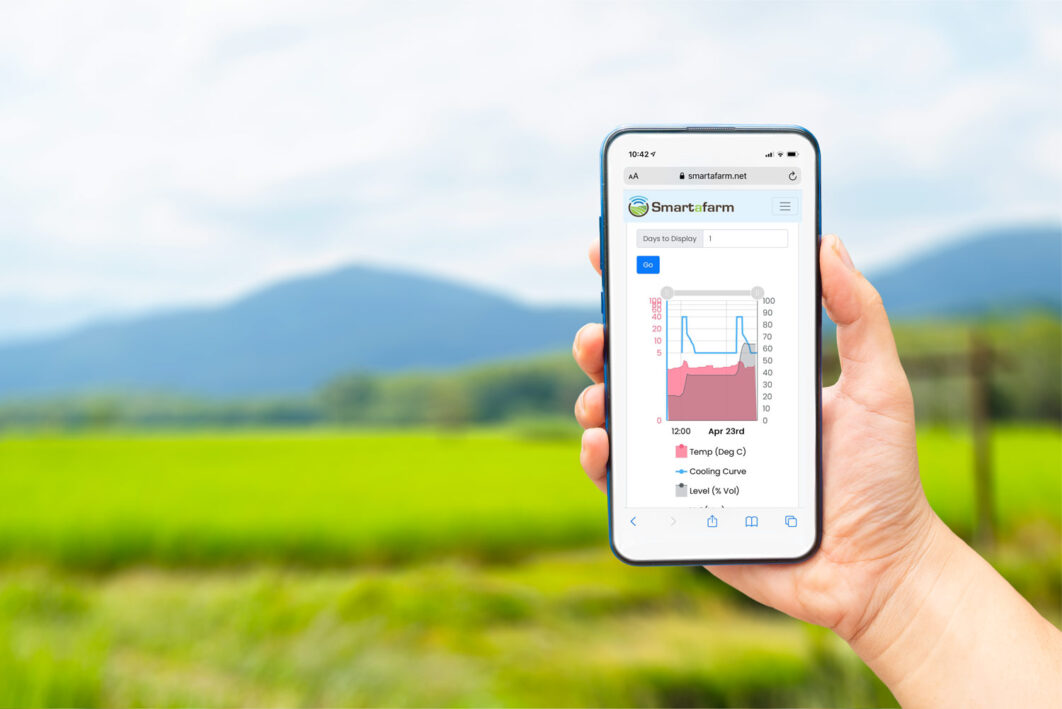You may have heard about SmartaFarm, the vat monitoring system that’s popping up all over Australia.
While there are other vat monitoring systems around, SmartaFarm is the first system that can be easily retrofitted to any vat.
Created by Smarta Industrial, the system delivers milk quality and quantity data, leading to increases in milk quality and traceability and logistics efficiency, while giving complete visibility over the entire supply chain.
“We’ve developed a number of solutions for the dairy industry and logistics,” says Ashley Jensen from Smarta Industrial. “We developed SmartaTrans the milk tanker control system that solves a number of the complex issues for the milk logistics sector. When doing that, we found there was a gap on the farm side.
“We knew what was happening from the time the truck turned up at the farm to pick up the milk, to the time it got to the factory. We had information about volume, temperature and other metrics on the milk.
“But we didn’t know what was happening with the milk on the farm. There was a massive gap there of one to three days.”
Ashley says that in most cases, when the truck arrives to pick up the milk, everything’s fine. “But sometimes there can be issues that impact on milk quality and quantity. However, because no one knows about this beforehand, poor quality milk can get through to the processor and then may need to be dumped,” he says.
“The SmartaFarm on-farm monitoring solution gives everyone in the supply chain the status of the milk from the point of the cow being milked and the milk coming into the vat, and in combination with the ICEBLOK block-chain enabled platform, all the way through to delivery to the processor.”
Dairysafe CEO Geoff Raven says this is exciting technology that will offer major milk quality and safety benefits to both the Australian dairy sector and consumers.
In the pilot stage, Smarta Industrial worked with a Queensland dairy processor, and set up the SmartaFarm system on all their supplying dairy farms. The results were fantastic.
“They are the first in Australia to have visibility across their whole supply chain from a volume and quality point of view with real-time analysis of milk to the National Milk Cooling Curve specification,” Ashley says.

“From a milk quality point of view, it allows them to ensure they have good quality milk up front. They don’t have the issue of trying to sort out milk quality problems later.
“Previously, the only point of milk quality was the milk sample taken by the tanker driver. That goes into an icebox, gets delivered to the processor and gets tested two days later for proteins, fats and bacteria. It can be three days before that information is known. By that stage, the milk has already been processed and is potentially ready for shipping to a supermarket.
“This technology removes all of those delays because that information is known at the vat in the dairy. The farmer, the tanker operator and the processor can see all the same information, and problems can be rectified on farm. It takes all the guess work out of the system.”
“The big plus for the farmer is that they can set up pre-emptive alerts to get notified of potential issues before they become a quality issue, potentially saving their milk and lowering the cost of otherwise extremely urgent vat repairs.”

Thanks to SmartaFarm, the dairy industry is seeing an increase in quality of milk and a decrease in dumping of milk. As a result, the Smarta Industrial-built solution is benefiting everyone in the supply chain from the farmer right through to the consumer.
The technology is now being used around Australia, including in Mount Gambier. “We know from our data and reporting across all the farms we have been integrated with, this system really improves efficiency,” Ashley says.
“The tanker is sent down to Mount Gambier to pick up the milk. That truck is there to pick up that one farm, or potentially a couple of farms, then drive to Canberra a day and a half later to deliver the milk.
“If the truck gets to the farm and milk is still warm, the truck has to wait for two or three hours for the milk to cool. Maybe milking was delayed, or there was a change in milking times – there’s a whole heap of factors on farm that affect milking.
“Or the truck gets down there and they’ve had a heap of rain the past two days, the sun’s been shining, and milk volumes have gone up 10 or 15 percent. They get there and they can’t fit it all in the tanker. So, they have to send another tanker down there to pick up a few thousand litres they couldn’t pick up. There is a whole heap of negative flow-on effects through the supply chain that are caused by that initial delay.
“With SmartaFarm, they know what’s happening in terms of milking times, temperature and volume, so they can leave Adelaide at the right time, or send a bigger tanker.”
SmartaFarm is a hardware and software solution that was designed and developed in Australia specifically for the Australian dairy industry.
In Australia there are approximately 4,500 dairy farms and probably close to 1,000 different types of vats and vat configurations. A solution that would work with all those different vats was required.
“We developed this as a fully integrated solution with hardware that is attached to the vat and dairy, and software that links the data from the vat into the supply chain system and the platform,” Ashley says.
“We replace the existing vat valve with our specially designed vat sensor. And a control panel is attached to a wall in the dairy. We retrofit the sensors and the vat doesn’t need to be modified in any way.”
The sensors give data about the milk including volume and temperature. They also give cleaning temperature of the vat which is another important food quality and safety factor.

The system runs independently of all other dairy systems and provides an independent data source to all.
The SmartaFarm sensor design also increases milk tanker pickup flow rates on most farms.
“Because existing valves are replaced, and most of those original valves are smaller, the larger SmartaFarm valve increases pumping efficiency,” Ashley says.
“On some farms in Tasmania, we’ve been able to decrease their pumping time by 30%, saving the logistics operator time and running costs.”
The sensors also include a radio frequency identification (RFID) that gives each vat a unique serial number which identifies the milk from that individual vat through-out the supply chain.
Costs to set up SmartaFarm in the dairy aren’t prohibitive. There is a cost to install the hardware in the dairy and a small monthly fee for ongoing access to the software. That allows access to the portal where farmers can access their data, from any internet-enabled device and set up their own custom alerts for things like temperature, milking times, plate cooler temperatures, and many more.
“This gives not only full data visibility but also, the ability to identify and prevent issues – in many cases, before it becomes a problem,” Ashley says
“We wanted to keep up front costs low to enable farmers to access this technology. Ideally, SmartaFarm will become the industry standard, improving milk quality and logistics efficiency for the entire Australian dairy industry.”
For more information visit:
